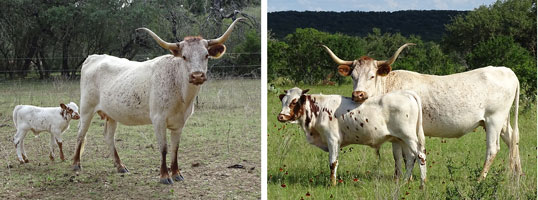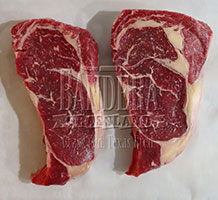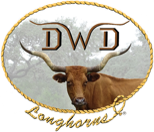
About DWD Texas Longhorns
Goal
Our goal is to preserve in the purest
of form, for our own enjoyment and the enrichment of future generations, the unique variety of genetics found only in the resourceful, hardy, and thrifty cattle of Spanish descent we call the majestic Texas Longhorn. Declared by the Livestock Conservancy as Critically Endangered, we embrace the opinion that a creature created by God through natural selection requires no improvement. DWD cattle are selected for functional efficiency with no attempt on our part at genetic augmentation. Consequently, DWD Longhorns remain in as close a natural state as possible. These adaptable cattle have taught us to be better stewards of our land and advocates for sustainable agriculture, a holistic involvement that rewards first the soil, then the native pant life, varieties of animal and invertebrate wildlife, and ultimately the production of wholesome, uncompromised food. We feel that only through the synergism of biologically integrated management will we have made our contribution to the land, the cattle, and future generations.
DWD Longhorns cattle in pasture
Bandera Grassland Grassfed Texas Longhorn beef.
Afilliated Links
Selection Criteria
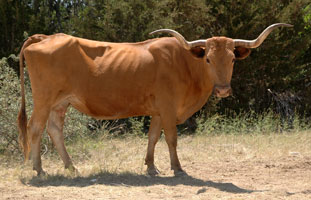
Each individual in our foundation herd was carefully scrutinized and selected for traits representative of fullblood, conservation Texas Longhorn cattle. Additionally, each animal passed visual inspection by recognized authorities in the field and DNA analysis to identify any evidence of impurity. This process compares an individual to other breeds and distinguishes breed influences by a percentage of impact from the various branches of cattle origins (Zebu, Iberian, Northern European, and African).
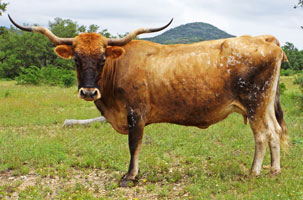
Typical characteristics of heritage Texas Longhorn cows are twisty horns, a product of slender horns growing laterally from an oval shaft like persons with wavy hair, that protrude from a flattop head absent of any poll. The cows possess a high tail set with a sloping pelvis, straight legs that transition smoothly from pins to hocks, hard feet, and compact udders. In keeping with practices learned from the original preservers of the breed; Emil H. Marks, Graves Peeler, and Ira "Cap" Yates, we only use male offspring from double-twisted-horned dams. They believed waxy-appearing, twisty horns were indicators of functional efficiency, for it was their observation that cows possessing them also carry the full package of attributes synonymous with breeding proficiency and endurance. Veteran producers Joe Kimball, Maudeen Marks, Lawrence Wallace, and Fayette Yates taught us to identify healthy, historically correct Texas Longhorn cows by selecting for long, straight-back heifers with adequate length to facilitate travel over rough terrain.
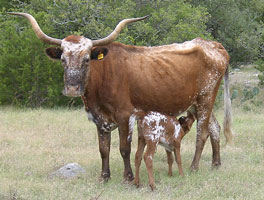
A highly fertile female will have a long feminine head that is approximately the same width from crown to muzzle. The eye sockets do not protrude. She will have long hair in her ears to keep out insects, smooth muscling, a bright shiny hair coat, a long heavy tail switch for swatting insects, carry greater depth in her hindquarters, and grow for 6 or more years to medium height with light to medium bone size indicating early reproductive maturity. A typical conservation Texas Longhorn cow will calve at age two and breed back in a timely fashion to raise five calves by age seven. The most fertile Texas Longhorn cow will have calved as many times as her years by age seven due to early breed-back. This trait is of great economic importance to commercial cattlemen.
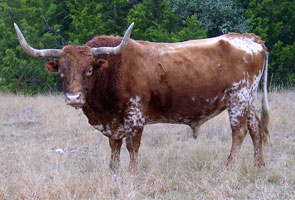
A highly fertile bull grows to medium height with horns that turn upward and slightly forward for fighting. He will have coarse, curly, dark, glistening hair, and a well-defined but not overly developed muscularity under a loose active hide. Greater weight is carried on his forelegs. He is higher in the flanks than other beef breeds, has loose shoulder blades and a straight back. The ears are small and tightly set under the horns and his face bears a convex nose bridge. A historically correct Texas Longhorn bull has a clean underside for travel through thorny brush. He is alert and pays close attention to his surroundings. We built our herd with animals exemplifying these characteristics that require no enhancement.







